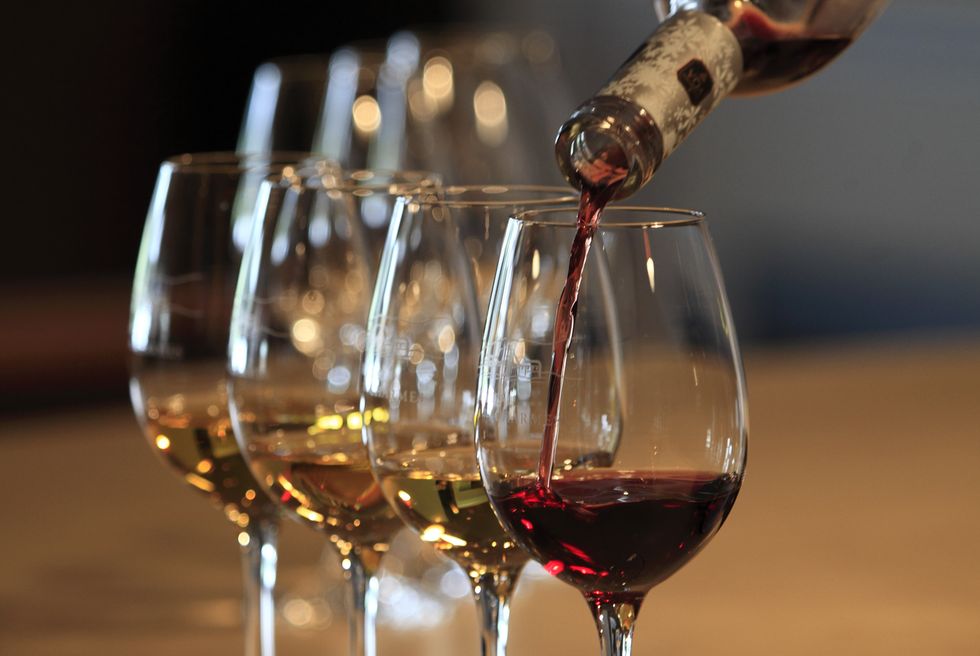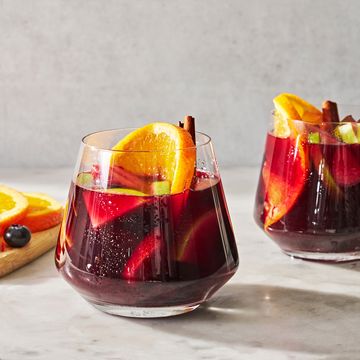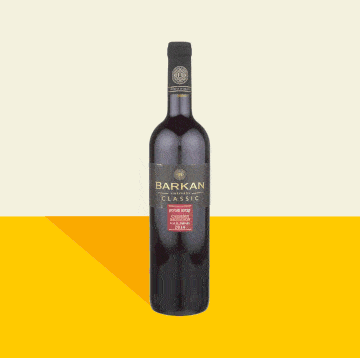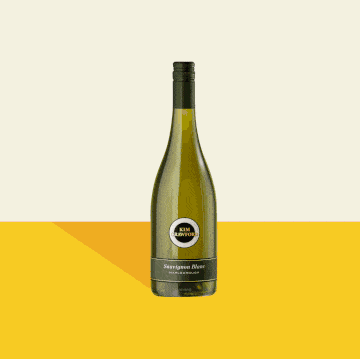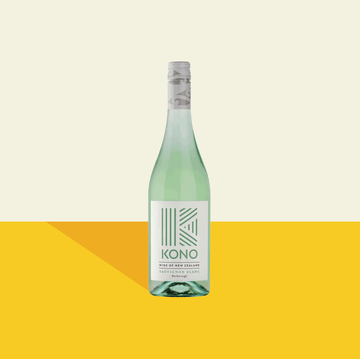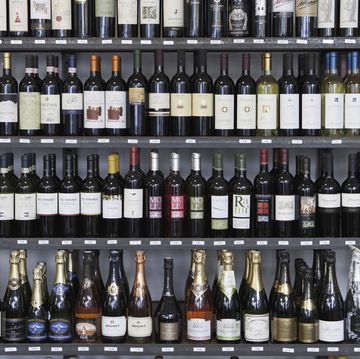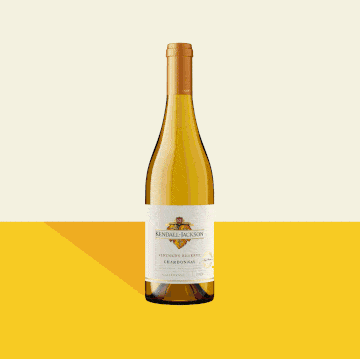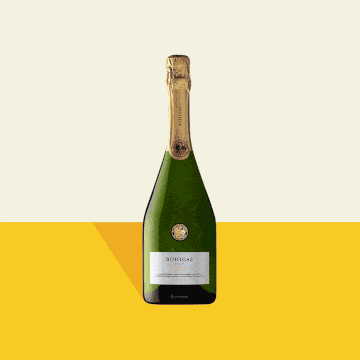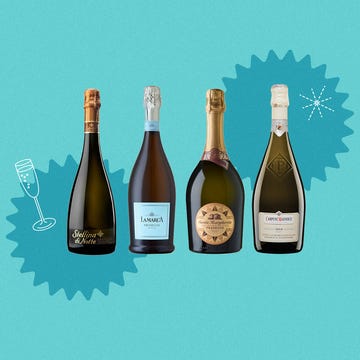You might describe fortified wines the same way you would your dream partner: full-bodied, strong, warming, durable, ages well. They're the bottles you probably associate with drinking before or after a meal—think: Sherry, Port, Madeira, Marsala, or Vermouth. These hefty wines are created by adding a neutral grape spirit to a base wine to boost the booze content and give it a longer shelf life. Historically, this was done so that wines could withstand expeditions across the sea. Today, that Ruby Port you’re sipping on might not have only traveled to you from the banks of Douro in Portugal but has been aging for decades, just waiting for the moment you decided to pair it with a slice of decadent chocolate cake. You're *literally* drinking history. Wanna learn a bit more?
What is a fortified wine?
Fortified wines are incredibly diverse. They can be dry, sweet, or anywhere in between. While some are delicate, others are syrupy. Some are nutty or fruity, others bitter. They come from all over the globe and from a multitude of different grape varietals. If you get into the nitty gritty with an enthusiast, he or she can even describe the types of soil that each grape grows on, the name of the wind that blows through a given region, and what size barrels the wines are aged in. Seriously.
So let's keep it simple—what unifies this style of wine is that it's all bolstered with a distilled spirit to increase the alcohol content to between 15 and 22 percent.
More From Delish

Each type of fortified wine is very distinguishable from the other because strict regulations ensure winemakers adhere to practices that result in accurate representations of the desired style. These include rules about alcohol by volume, grapes used, the type of spirit added, aging requirements, and resulting sugar content. Regionality is essential, too. Port's gotta come from Portugal, Sherry from Spain, and so on and so forth.
How is fortified wine made?
Fortified wine production starts similar to any other wine—grapes are harvested, pressed, and then fermented. Fermentation uses yeast to convert the grape sugar to alcohol. If the neutral spirit (generally between 50-70% abv) is added before fermentation then it prevents those sugars from converting, resulting in a naturally sweeter but definitely boozier wine. The longer the winemaker waits to add the spirit throughout the process of fermentation, the drier the resulting wine. The driest wines will be created if the spirit is added after fermentation has completed.
How is fortified wine aged?
The short answer is in wood. Sometimes with additional aging in bottle. For many years.
The long answer involves humidity, yeast, attics, and fractional blending, so we'll just skip that. Just like each style has different restrictions for grape use and when fortification occurs, they also differ greatly in aging requirements and methods.
What are types of fortified wine?
Let's run through some of the more popular kinds, shall we?
Sherry: Sherry wears many hats. In its driest and most delicate hat, it's called a Fino. When it's wearing its richest and most robust hat, it's an Olorosso. But there are hats in between, too. (Okay, enough of the hat chat.) All styles will come from Andalusia, Spain, and are fortified after fermentation. They are aged using the solera system, in which younger sherries are added to older sherries. Because in life, some years are better than others.
Port: Port comes from Douro River Valley in Portugal. There are two basic styles (Ruby and Tawny), with sub-styles in between. Ruby port finishes its aging in bottles, resulting in a more fruit-driven wine. Its raspberry, cherry flavors couple perfectly with chocolate anything. Tawny port matures completely in wood. As oxygen seeps through the wood into the wine, it creates nutty, caramelized characteristics. Play it safe and mirror flavors when pairing or let opposites attract and pair it with a cheese plate.
Madeira: This "cooked" wine comes from the Madeira Islands of Portugal. It first developed its sense of style centuries ago while making sea voyages for months at a time. The wine was exposed to repeated heating and cooling leading to basically indestructible wines. Madeira producers mimic these voyages during the aging process using hot steam from coils, or naturally and gently in sun-warmed attics over years.
Marsala: Marsala is a white fortified wine from Sicily, Italy, that ranges from dry to sweet. When dry, it's typically served as an aperitif (a before dinner drink to whet the appetite). Sweet madeiras are more commonly cooked with than sipped. Did I hear someone say Chicken Marsala?
What is aromatized wine?
Aromatized wines are fortified wines that have been spruced up with spices, herbs, or other natural flavorings.
What are types of aromatized wine?
We'll cover the basics:
Vermouth: Vermouth is composed of a dry white wine that's fortified with brandy and aromatized with wormwood and other goodies. Confusingly, Italian vermouth usually refers to the sweet version and French vermouth refers to its dry counterpart, though both styles can be produced in either country.
Quinquina: These are flavored with quinine, a bitter compound found in chichona bark. Some even believe quinine to have medicinal properties.
Barolo Chinato: This one has a base wine of Nebbiolo from Barolo. It's aromatized with quinine thus making it an Italian quinquina.
How should you store fortified wines?
When considering how to store these wines, think of a wine cellar—dark and cool. Once you open the bottles, they should be enjoyed rather quickly (darn!), especially the more delicate ones, like fino sherry. Others can last for a few months in the fridge post bottle poppin'. When in doubt, look into proper storing for that particular style, as they all vary slightly.
How should fortified wines be served?
Each type will vary in recommended serving style, chilled or room temp, in a coupe or in a cocktail...or chugged straight from the bottle. Play around and see what you like best! It might differ from the way your cute, local bartender prefers it.

